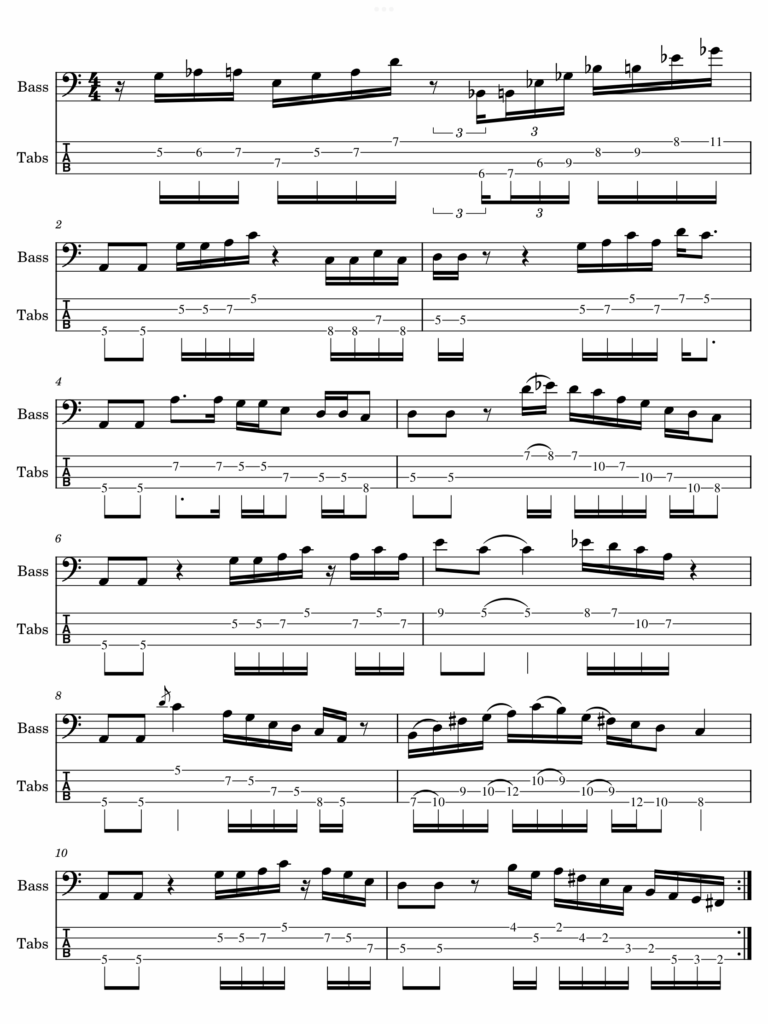For bassists, mastering the art of bass fills is more than just a skill, it’s an essential element that can change your playing. These fills not only add creativity but also bring life to your basslines. In this post, we’ll explore an approach to playing bass fills with the pentatonic scale, a powerful tool that can transform your bass playing into something truly unique. The pentatonic scale, often referred to as the “five note wonder,” is an essential tool for all bassists. It’s not only user friendly but also incredibly powerful.
Understanding the Pentatonic Scale
The major pentatonic scale is constructed by adding the 2nd and 6th notes of the major scale to a major triad. This scale isn’t confined to major and dominant chords; it can be effectively used with minor chords as well. Every major pentatonic scale corresponds to a minor pentatonic scale, and they can be interchanged seamlessly. This interchangeability stems from the minor pentatonic scale being essentially an inversion of the major pentatonic scale.
The Five Positions of the Pentatonic Scale
To fully explore the creative potential of the pentatonic scale, it’s crucial to learn all its positions. You can also add flavour to your playing by incorporating the blues scale into your pentatonic playing. Combining these scales offers a unique opportunity to create more bluesy and expressive fills. Additionally, practice permutations of the scale, assigning numerical values to its notes to craft a wide array of combinations. This approach opens the door to various exercises and melodic possibilities.
Playing Fills
The key to playing good fills while maintaining the groove lies in mastering the positions of the pentatonic scale. Here’s how you can seamlessly transition between your bassline and fills:
1. Groove Establishment:
Start by setting the groove, ensuring you have a solid foundation for your bassline. Feel the rhythm, and pay particular attention to your bassline’s rhythmic variations. This is where you can anchor your baseline, often on beat one.
2. Position Based Fills:
Don’t limit yourself to a single area of the neck. Instead, explore all five pentatonic scale positions or experiment by mixing two of them. Begin by playing a fill in one pentatonic scale position, then return to the groove. Next, shift to the second position for your second fill and continue this pattern. For added complexity, mix two positions or incorporate elements from the blues scale.
3. Sense of Direction:
Give your phrasing a sense of direction. Your fills can take various forms, such as ascending, descending, vertical (using arpeggios), horizontal (employing scales), or any combination of these. Embracing diverse directions in your fills can make your playing instantly more musical.
4. Transitioning from Fills Back to the Groove:
Practice transitioning from your fills back to the original bassline. This skill ensures there’s no awkward disconnect as you shift between these two essential elements of bass playing.
Mastering the art of playing bass fills with the pentatonic scale is about more than showcasing your skills, it’s about seamlessly integrating your musical voice into the groove. The pentatonic scale offers a world of possibilities for bassists looking to unlock their creative potential.
If you’re eager to take your bass playing to the next level, check out the Bass Mentorship Program Level Two. This advanced program is designed to refine your techniques, deepen your understanding of the pentatonic scale, blues scale, fills, harmony and more! Seize this opportunity to become the best bassist you can be,
Mentorship Program Level Two
Mentorship Program Level Two – BassAdvice Elevate Your Bass Playing to New Heights Course Format: 6 comprehensive bass lessons delivered through PDFs, videos and audio, offering a rich and immersive learning experience. Advanced Effectiveness: This pioneering program is designed to refine your skills. Commit to one topic per week and in just two months,…


